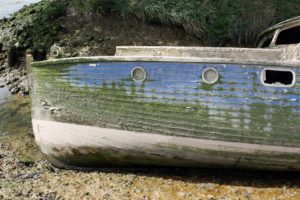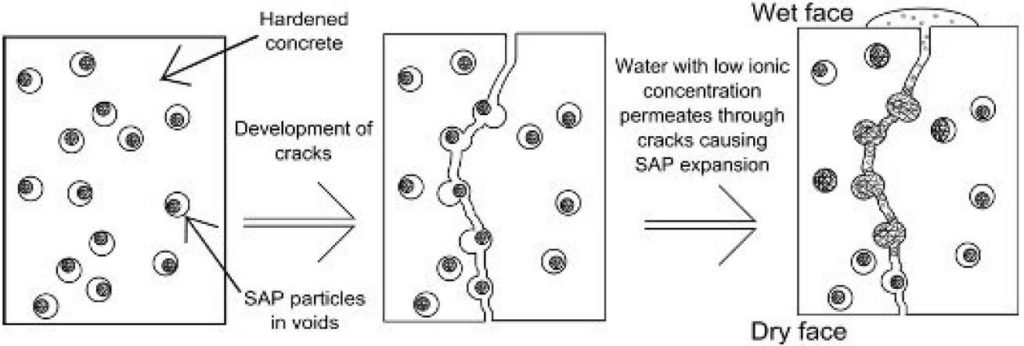
Superabsorbent hydrophilic polymers are everywhere—often, in places we’d never suspect. Researchers continue to discover new uses for these handy materials: in concrete, in stainless steel coatings, medical devices, and many other industrial applications. Truly, they are one of the most fascinating areas of chemical research today.
We have collected below a sampling of news articles about recent developments in the field of SAPs in the hopes that these will inspire conversations with your students about the practical uses of hydrophilic substances. If you come across an article of interest, please share it with us in the Comments section below.
Happy reading!
Super Absorbent Hydrophilic Polymers in Agriculture

Megan uses a moisture meter to measure soil moisture (left). Plants at the beginning of the project (right). Photo credit: AMNH.org
Recently, 15-year-old Megan from drought-riddled West Texas won a Young Naturalist Award from the American Museum of Natural History for her essay on hydrophilic gels and their applications in agriculture.
Megan wondered, “If only there were a way to capture that much-needed moisture and lock it away in the soil, to be used when the rains cease and the soil begins to dry out. Could I apply hydrogels to my backyard and conserve water by retaining moisture in the soil?”
You’ll want to share her wonderful analysis with your students. She summarizes her research:
“I believe that superabsorbent cross-linked polyacrylamide polymers have a very absorbing future! And I am thrilled to do my part in joining the water conservation effort to quench the thirst of the arid Earth.”
.
A New Hydrophilic Polymer to the Rescue
Phys.org reports that an eco-friendly strategy has been developed by researchers to stop the “marine fouling,” the collection of bacteria and marine organisms on objects immersed in seawater. Historically, marine fouling badly damages ships, seawater filtration systems, and harbor installations, and leads to expensive and time-consuming repairs. Fouling also corrodes ship hulls which increases their fuel consumption.
Traditional measures against marine fouling rely on coatings that release substances known as biocides, which deter or kill these microorganisms. But these compounds also harm the marine habitat, especially in shallow bays and harbors, leaving an extensive ecological footprint.
Working under the Innovative Marine Antifouling Solutions program, a team of scientists has created a safe, polymer-based, hydrophilic coating. The covalently bound PMOx polymer coating swells dramatically when immersed in seawater, promoting the detachment of bacteria and other marine organisms.
Read more at: http://phys.org/news/2016-03-environmentally-friendly-polymer-coatings-inhibit.html
16-Year-Old Invents New Hydrophilic Material
 A 16-year-old schoolgirl from Johannesburg, South Africa has invented a hydrophilic super material that will fight drought. It’s a combination of orange peels and avocado skins.
A 16-year-old schoolgirl from Johannesburg, South Africa has invented a hydrophilic super material that will fight drought. It’s a combination of orange peels and avocado skins.
Amazing!
Kiara Nirghin’s “No More Thirsty Crops” project won the 2016 Google Science Fair’s Community Impact Award for the Middle East and Africa.
You can review her entire Google Science Fair project here, or share this brief article with your students.
“Smart” Concrete on the Horizon
Remember the kid’s rhyme, “Step on a crack, break your mother’s back?” The Imperial College of London wants to get rid of concrete cracks. How? By incorporating hydrophilic superabsorbent polymers (SAPs) into the concrete mixture. In their report on “Self-Sealing Cracks with Superabsorbent Polymers,” they concluded that the idea is worth further exploration.
Dr Agnieszka Klemm of Scotland’s Glasgow Caledonian University is one of the world’s foremost experts in intelligent construction materials. She has conducted significant research, and published over 20 journal articles, focusing on the development of materials modified by superabsorbent polymers (SAP).
SAP are novel materials which can be used as internal curing agents in concrete and mortars. Their high capacity to absorb and release water can help to control cement hydration processes and hence avoid cracking.
.

